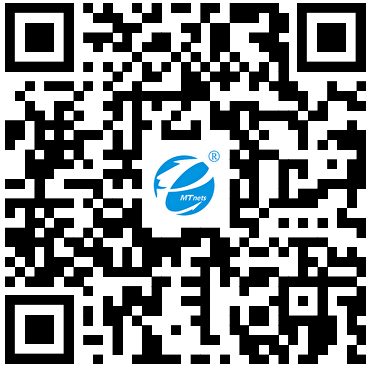术语表 Glossary
Glossary
Many of our products can have different names when used in different areas of research, and if you are new to thin film and organic electronics, it can be difficult understanding the numerous acronyms. As such, we’ve put together a glossary of terms to explain some items and thought it might be useful for others in the field.
Cathode mask
The cathode mask is an evaporation mask for the PV and LED systems that allows the patterning of a metal cathode strip onto the ITO substrates. We often find that there can be some confusion over this as we also have two full substrate systems called the 'Pixelated Anode system' and the 'Pixelated Cathode system'. These names refer to the particular substrate used within the system and both have corresponding evaporation masks available. In addition, there is much research into "inverted" devices where anode and cathode are effectively reversed. However we use the phrase 'cathode mask' generically to mean the top evaporated electrode, whether it is for depositing cathode (for normal) or anode (for inverted) devices.
Electrical connection legs
Clip-on electrical legs used to make contact to the PV/LED substrate and allow insertion into a number of different sockets, including our ZIF test boards.
Dynamic dispense
A spin coating method where the substrate is allowed to reach the desired spin speed before the solution is dispensed into the centre of the substrate. See this technique in our demonstrative video.
Encapsulation
This is the process of protecting the active layers on a device by preventing or delaying the ingress of oxygen to the pixels on the device. We carry this out by applying a small drop of UV-curing encapsulation epoxy onto the active layers and placing a glass coverslip over this. The epoxy is inert and will not react with the active layers of the device. The weight and pressure of the coverslip causes the epoxy to spread and seal the area. This is then cured under a UV lamp to fix the coverslip in place. For full details or this process you can view the encapsulation section in our fabrication guide available here.
Encapsulation glass
Glass coverslips of the correct size and shape to cover the active parts of a substrate (which need protecting from oxygen/moisture) while leaving the edge of the substrate exposed such that electrical connections can be made.
Evaporation Masks/Deposition Masks
See "Shadow Mask".
Full ITO substrates
Unpatterned ITO substrates where the ITO covers the entire surface of the substrate.
Glovebox
A sealed container with an inert gas atmosphere (e.g. nitrogen) allowing for device processing in an environment absent of oxygen or moisture.
ITO
Indium tin oxide, the most common type of transparent conductive oxide (TCO).
Lid
The lid included with each mask is a single sheet of 0.5 mm or 1 mm stainless steel used to fix the substrates in the mask securely in position.
Monomer
A single molecular unit that can bonded with other units to create a polymer in a process called polymerisation.
Mn
Number average molecular weight of a polymer.
Mw
Weight average molecular weight of a polymer.
Orthogonal solvents
A solvent is orthogonal to another when it does not dissolve the layer of material deposited from the other solvent.
PDI
Polydispersity index of a polymer, the Mw divided by the Mn.
Pin-holes
Small, circular gaps within a thin film. Pin-holes are typically the result of dust particles changing the local surface energy of the substrate before it is processed onto.
Pixelated Anode Substrates
(Pre-)patterned ITO substrates where the anode (ITO) is divided into pixels and a common cathode is used.
Pixelated Cathode Substrates
(Pre-)patterned ITO substrates where a single (ITO) anode is used and multiple (pixelated) cathodes are used to define the individual pixels.
Polymers
A long chain molecule made of many repeat units. The single repeat unit is derived from the monomer.
Push-fit testboard
The push-fit testboards are available for the LED/PV systems, as well as some of our FET systems. The term "push-fit" refers to a specially designed bracket that is milled from two pieces of plastic with a clip lid. The substrate can then be placed in the bracket where electrical contact is made by gold-coated spring-loaded connectors. With the lid of the bracket clipped in place this provides a firm electrical contact.
The LED/PV push-fit test boards eliminate the need for the lead frames/electrical connection legs and the FET test boards eliminate the need for probe stations, making testing of devices quicker, easier and less likely to damage the devices.
Self assembly
A process by which molecules or polymers organise themselves through specific interactions without an external stimulus. This process requires the species to be able to freely move, and therefore occurs typically in solution or as a film is drying.
Shadow Mask
Shadow masks are used for the patterned evaporation of metals onto substrates. They can be produced either by electrochemical etching for low to medium precision (usually used for OLEDs and OPVs), or by electroformed nickel to produce the much finer features more commonly found in work with OFETs. The masks with larger features, more commonly produced by chemical etch, are often called 'evaporation masks'.
Soxhlet extraction
The process of purifying a polymer by repeatedly washing it in boiling solvents in a specially designed piece of glassware. Typically a material is washed with solvents in which it is poorly soluble first (to remove impurities and monomers) before being washed with solvents that it is successively more soluble in to extract specific molecular weight fractions of the material. The different molecular weight fractions allow users to select the best material for their own research.
Spacer
An optional layer available with many of our evaporation masks that keeps the substrates a small distance (typically 200 μm) away from the actual mask to prevent direct contact. It is recommended for normal thermal evaporation systems to help avoid scratches and allow better out-gassing of residual solvent from organic layers. However, we also provide the option of direct contact masks with no spacer for sputtering and other non-directional deposition systems, as well as for thermal deposition systems with oblique angles (or a very short throw) so that well defined edges can be achieved.
Update: As part of our program of product improvement we have decided to simplify the masks available. Each type of mask is now available as a two sided mask. On one side a spacer and substrate holder are welded to the mask and on the other just a substrate holder. This will allow our customers to have access to both options to test out if they are uncertain which is best suited for their work. It also means you only need to purchase a single mask rather than two if you would like to use both systems.
Spin coating
This is a thin-film deposition method used with solutions. A spin coater is a piece of equipment that allows a substrate to be fixed in place while it is spun at a specified speed. The solution is deposited onto the spinning substrate to produce a uniform layer at a specific thickness using centrifugal force. More information about spin coating can be found in our online Spin Coating Guide.
Static dispense
A spin coating method where the solution is placed upon a stationary substrate. The spin coater is then started and brought up to the required speed as fast as possible. Watch a video demonstration of this technique.
Substrates
A substrate is simply the surface onto which material is processed. For our OPV/PV and OLED/LED devices, the substrate is essentially a small piece of glass. Substrates for the OFET/FET devices also include silicon. Whilst a range of substrate sizes are available on the market, our typical size substrate is 20 mm x 15 mm and we currently stock about 7 different substrate varieties. The substrates are most commonly coated with a patterned layer of ITO (indium tin oxide). This allows for different device structures, and each substrate comes with a compatible mask range.
Substrate Holder
This is the common layer within all our evaporation masks and packs, and is used to align the substrates on top of the mask patterning.
Substrate Pack
The substrate pack is a full set of substrate components for producing PV or LED devices. It includes the substrates, coverslips, electrical connection legs and epoxy but no semiconducting materials.
Substrate rack
The substrate rack is a single piece of milled polypropylene that allows you to store your substrates and to keep them separated during cleaning.
TCO
Transparent conductive oxide is the generic term for a class of materials that are both transparent and conductive - a key requirement for any device that needs both light and electricity to get in/out. Common TCO for using in thin film electronics include ITO (indium tin oxide) and FTO (fluorinated tin oxide).
Throw
The distance between the source being evaporated from and the substrates being evaporated onto. The throw can affect the resulting distribution of thickness of material evaporated across the substrate surface.
Wettability
The degree of wetting of a given liquid on a give solid surface
Wetting
The ability of a liquid to coat and maintain contact with a solid surface. Wetting is determined by a balance of adhesive (between the liquid and solid) and cohesive (within the liquid) forces. These forces are determined themselves by the surface energy of the solid and the surface tension of the liquid. The degree of wetting can be quantified by measuring the contact angle that the liquid makes with the solid surface.
免责声明
- 凡本网注明“来源:化工仪器网”的所有作品,均为浙江兴旺宝明通网络有限公司-化工仪器网合法拥有版权或有权使用的作品,未经本网授权不得转载、摘编或利用其他方式使用上述作品。已经本网授权使用作品的,应在授权范围内使用,并注明“来源:化工仪器网”。违反上述声明者,本网将追究其相关法律责任。
- 本网转载并注明自其他来源(非化工仪器网)的作品,目的在于传递更多信息,并不代表本网赞同其观点和对其真实性负责,不承担此类作品侵权行为的直接责任及连带责任。其他媒体、网站或个人从本网转载时,必须保留本网注明的作品第一来源,并自负版权等法律责任。
- 如涉及作品内容、版权等问题,请在作品发表之日起一周内与本网联系,否则视为放弃相关权利。
 手机版
手机版 化工仪器网手机版
化工仪器网手机版
 化工仪器网小程序
化工仪器网小程序
 官方微信
官方微信 公众号:chem17
公众号:chem17
 扫码关注视频号
扫码关注视频号











 采购中心
采购中心